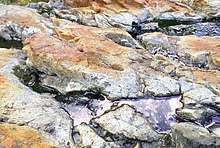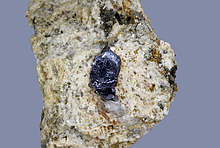Home PageAbout MindatThe Mindat ManualHistory of MindatCopyright StatusWho We AreContact UsAdvertise on Mindat
Donate to MindatCorporate SponsorshipSponsor a PageSponsored PagesMindat AdvertisersAdvertise on Mindat
Learning CenterWhat is a mineral?The most common minerals on earthInformation for EducatorsMindat ArticlesThe ElementsThe Rock H. Currier Digital LibraryGeologic Time
Minerals by PropertiesMinerals by ChemistryAdvanced Locality SearchRandom MineralRandom LocalitySearch by minIDLocalities Near MeSearch ArticlesSearch GlossaryMore Search Options
The Mindat ManualAdd a New PhotoRate PhotosLocality Edit ReportCoordinate Completion ReportAdd Glossary Item
Mining CompaniesStatisticsUsersMineral MuseumsClubs & OrganizationsMineral Shows & EventsThe Mindat DirectoryDevice SettingsThe Mineral Quiz
Photo SearchPhoto GalleriesSearch by ColorNew Photos TodayNew Photos YesterdayMembers' Photo GalleriesPast Photo of the Day GalleryPhotography
╳Discussions
💬 Home🔎 Search📅 LatestGroups
EducationOpen discussion area.Fakes & FraudsOpen discussion area.Field CollectingOpen discussion area.FossilsOpen discussion area.Gems and GemologyOpen discussion area.GeneralOpen discussion area.How to ContributeOpen discussion area.Identity HelpOpen discussion area.Improving Mindat.orgOpen discussion area.LocalitiesOpen discussion area.Lost and Stolen SpecimensOpen discussion area.MarketplaceOpen discussion area.MeteoritesOpen discussion area.Mindat ProductsOpen discussion area.Mineral ExchangesOpen discussion area.Mineral PhotographyOpen discussion area.Mineral ShowsOpen discussion area.Mineralogical ClassificationOpen discussion area.Mineralogy CourseOpen discussion area.MineralsOpen discussion area.Minerals and MuseumsOpen discussion area.PhotosOpen discussion area.Techniques for CollectorsOpen discussion area.The Rock H. Currier Digital LibraryOpen discussion area.UV MineralsOpen discussion area.Recent Images in Discussions
Identity HelpNaming composite minerals
18th Nov 2017 20:26 UTCReiner Mielke Expert
18th Nov 2017 23:04 UTCJolyon Ralph Founder
18th Nov 2017 23:07 UTCReiner Mielke Expert
18th Nov 2017 23:28 UTCDon Saathoff Expert
Don S.
18th Nov 2017 23:41 UTCReiner Mielke Expert
Wouldn't the word series be redundant? Also why not elbaite-dravite if elbaite constituted the majority of the crystal? One problem, doesn't the dash imply that you are not sure which species of that series it is? What about the case where you have a zoned crystal of elbaite that has a layer of dravite on it. That is you have identified elbaite and dravite of which there is no doubt.
18th Nov 2017 23:43 UTCJolyon Ralph Founder
You didn't specify before which had the majority.
For something like a tourmaline I'd probably name things based on composition inside - outwards, or base to termination, eg if the core is dravite and the rim is elbaite, I would call it dravite/elbaite
Jolyon
18th Nov 2017 23:48 UTCReiner Mielke Expert
18th Nov 2017 23:56 UTCReiner Mielke Expert
Your suggestion is along the lines that I was thinking. However as far as I know that is not an option for naming in Mindat. Should it be?

19th Nov 2017 01:21 UTCDoug Daniels

19th Nov 2017 02:22 UTCAlfredo Petrov Manager
19th Nov 2017 02:51 UTCReiner Mielke Expert
"some readers might assume that you mean a crystal with dravite and elbaite zones" That is exactly what I mean. "we are talking about a single phase that is compositionally between elbaite and dravite." That is not what I am talking about.

19th Nov 2017 03:07 UTCAlfredo Petrov Manager
For the case you are talking about then, I'd recommend not using a hyphen at all, but rather calling it a "zoned dravite and elbaite crystal". A bit long, but it does at least avoid confusion.
19th Nov 2017 06:35 UTCJoel Dyer
And thanks to Alfredo for an excellent and actually concise naming solution.
19th Nov 2017 08:35 UTCJolyon Ralph Founder
Ah. but if we want to be accurate:
Elbaite 49% Dravite 51% compositionally = dravite
Elbaite 51% Dravite 49% compositionally = elbaite
We do not need to label a specimen as 'dravite-elbaite series' if the composition is known'. It's one or the other
19th Nov 2017 10:05 UTCDavid Von Bargen Manager
19th Nov 2017 11:43 UTCJolyon Ralph Founder
How do you define what is a 'single phase of mixed composition' and multiple zones of a certain composition.
If you get down to the atomic level the unit cell can either be elbaite or dravite, it can't be both.
So, at some level or another there is zoning.
19th Nov 2017 12:06 UTCReiner Mielke Expert
19th Nov 2017 12:09 UTCReiner Mielke Expert
It was analyzed. See: https://www.mindat.org/photo-856025.html
19th Nov 2017 12:13 UTCJolyon Ralph Founder
Giving it a name such as dravite-elbaite would just lead to confusion.
19th Nov 2017 12:15 UTCReiner Mielke Expert
">Don's use of "series" is not necessarily redundant because it clarifies that we are talking about a single phase that is compositionally between elbaite and dravite" That is correct if we are talking about a single phase that is compositionally between elbaite and dravite, but I am not talking about that.
19th Nov 2017 12:16 UTCOlav Revheim Manager
- Exsolution lamellaes
- Random distribution of molecules close to the midpoint between two or more species
- partly metamorphosed crystals
- Gradual zoning with an inner zone, an outer zone and a zone with random composition
In these cases the relative percentage will not necessarily be known or interesting. I think that quite a few systemaic collectors would be interesting to highlight the content of kirchsteinite on the label of a sample with "exsolution lamellae of kirschsteinite in magnesium-iron olivine"
Olav
19th Nov 2017 12:25 UTCReiner Mielke Expert
"Then I'd call it a dravite crystal with an elbaite overgrowth." That certainly is a good description but not what I would call a name or a suitable label. What about an intergrowth that is not as well defined, like multiple zones of different shapes or several species in one crystal? It would make more sense to me to use a term such as dravite/elbaite as this would not depend on the geometry of the zones and would not be confused with dravite-elbaite series. It would also fit neatly on a label.
19th Nov 2017 12:53 UTCJolyon Ralph Founder
The name for the label would be Dravite, Elbaite.
19th Nov 2017 12:54 UTCJolyon Ralph Founder

19th Nov 2017 12:57 UTCFranz Bernhard Expert
Franz Bernhard
19th Nov 2017 13:49 UTCReiner Mielke Expert
I thought it was a good one.
19th Nov 2017 14:50 UTCŁukasz Kruszewski Expert

19th Nov 2017 15:00 UTCNelse Miller

19th Nov 2017 15:01 UTCNelse Miller

19th Nov 2017 15:04 UTCNelse Miller
19th Nov 2017 15:11 UTCReiner Mielke Expert
I am not talking about a solid solution. Please read the thread more carefully.
19th Nov 2017 15:13 UTCUwe Kolitsch Manager
And if you have analytical data, put them in the (more detaild) electronic description in your database.
19th Nov 2017 15:17 UTCReiner Mielke Expert
This is a photo by Pavel from an earlier thread.
As technology improves more and more of this is becoming apparent and I find the current method of naming things lacking.

19th Nov 2017 15:18 UTCKeith Wood
Without specifying what elbaite-dravite means, a hyphenated label only leads to confusion. The point of language is to say what you mean. And if that means a longer, even cumbersome label, so be it. But if it is zoned, something like "dravite over elbaite" is pretty short. If it is not zoned, then it is one or other, and should just be named whichever it is.

19th Nov 2017 17:33 UTCDonald B Peck Expert

19th Nov 2017 18:15 UTCKeith Wood
Could just call it "Intergrown w,x,y,z and cassiterite." If you are looking for short and true, you won't get much better than that.
These days there is no reason a label has to have all the information on it. If you keep a database or spreadsheet, and use catalog numbers (as you should), they should refer you to the full description, so the label can be simple. It's main purpose is to connect the specimen to the full information, just as the label you place on the specimen is supposed to do.
There have been entire articles written about single specimens. You can't always fit all the information on a label, so don't worry about it. Accept it, pick a cut off point that suits you for what goes on a label and call it good. But everything goes in the database. For instance, I hate having chemical formulas on my labels. It makes the labels ugly, and anyone can look up the formula if they care. That's my pref. Others like them. Pick what you like and stick with that.

20th Nov 2017 17:44 UTCDonald B Peck Expert
21st Nov 2017 19:25 UTCRalph S Bottrill 🌟 Manager
Generally we should be very cautious in using mineral series; it strictly infers substitution between two end members but in reality it's usually much more complex, with multiple end members. Eg. In tourmalines they usually contain Na, Ca and vacancies in one site, Mg, Fe, Mn, Al, Li, etc in another, OH/F substitution, etc, so most tourmaline compositions should be expressed in terms of multiple end members, depending how finicky you want to be, and rarely just a simple series between two endmembers.
We should be very sceptical about any tourmaline names without good analyses, including the vacancies, F and Li contents.
Some such minerals can be complexly zoned, eg tourmaline, garnet, amphiboles, etc, to the extent that you can have multiple zones within one crystal representing several different species based on their major elements, not just core and rim. Not everything can get a simple, specific name; "tourmaline group" etc is sometimes the best name.
Despite these issues, sometimes you get specimens difficult to categorise without a series name, eg in Mt Bischoff most of the carbonate is around mid-way between siderite and magnesite with only minor other substitutions, so "siderite-magnesite series" works there, unless you do numerous probe analyses of each specimen to prove the dominant species. The resultant specimen can be of little aesthetic value! I suppose if they also get Mn-rich they can be just called calcite-group but that's a bit vague.




Mindat.org is an outreach project of the Hudson Institute of Mineralogy, a 501(c)(3) not-for-profit organization.
Copyright © mindat.org and the Hudson Institute of Mineralogy 1993-2024, except where stated. Most political location boundaries are © OpenStreetMap contributors. Mindat.org relies on the contributions of thousands of members and supporters. Founded in 2000 by Jolyon Ralph.
Privacy Policy - Terms & Conditions - Contact Us / DMCA issues - Report a bug/vulnerability Current server date and time: April 20, 2024 06:16:15
Copyright © mindat.org and the Hudson Institute of Mineralogy 1993-2024, except where stated. Most political location boundaries are © OpenStreetMap contributors. Mindat.org relies on the contributions of thousands of members and supporters. Founded in 2000 by Jolyon Ralph.
Privacy Policy - Terms & Conditions - Contact Us / DMCA issues - Report a bug/vulnerability Current server date and time: April 20, 2024 06:16:15












